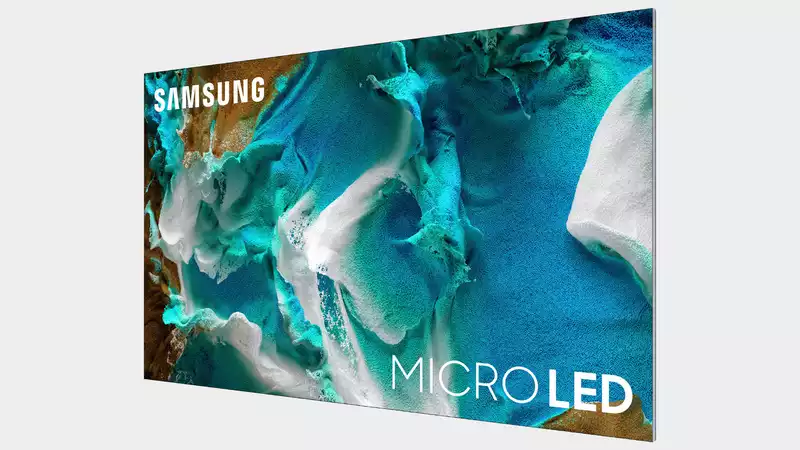While this year's CES will showcase the expected hordes of LED-backlit and OLED displays, quantum this and that and 8K everything, there are a small but growing number of arguably more exciting displays based on microLEDs. Sony and Samsung are among the brands that will be presenting new microLED models at CES in 2021. But we PC gamers can't get too excited.
MicroLEDs are the future. They will be great. But they won't be in your PC for years.
It's a shame because micro LEDs have so much to offer: like OLEDs, they are a self-emitting technology, where each pixel is a fully switchable light source. Thus, individual pixels can be turned off completely, producing "true" black tones and great contrast.
Unlike OLEDs, however, micro-LEDs do not suffer from permanent burn-in because they do not use organic compounds; with OLED displays, differential degradation within RGB sub-pixels is a problem. Briefly, blue subpixels wear out faster than red and green subpixels, leading to permanent image burn-in. Yucky.
The constant presence of taskbars, menus, and screen furniture on Windows PCs makes OLED displays prone to burn-in, one reason why OLED desktop monitors are almost non-existent while OLED TVs are becoming increasingly common and affordable This is one of the reasons why OLED TVs are becoming increasingly common and affordable.
MicroLEDs also have the advantage of supporting peak brightness across the entire panel.
In any case, Samsung's new "consumer" microLED TVs for CES 2021 are an example of how far from mainstream microLED screens, including PC monitors, are. In many ways, Samsung's new set is a more conventional screen than any microLED display to date. They have all the features needed to connect and view content, including smart TV, audio capabilities, and HDMI inputs. However, the 110-inch display announced late last year costs more than $100,000.
Samsung will be showing a slightly smaller version of the same new microLED product at CES, down to 88 inches, but it is still expected to be priced well over $50,000. This new TV is certainly not mainstream. As for Sony's new microLED display, it is even larger and more expensive.
The reason for the huge cost can be attributed to several factors. However, one of the most challenging factors is the current "pick-and-place" manufacturing technique where each LED is individually attached to a microLED backplane.
Given that a 4K screen has 8 million pixels, each with three sub-pixels, there are many tiny lights that must be mounted; one error can cause the entire panel to fail. So far, micro-LED displays are usually made up of multiple modules, which helps alleviate this problem. A pixel failure does not mean that the entire display is ruined, but rather that a module is ruined. However, yields are still very poor, driving up costs. The "pick and place" process is very time consuming, even though it is done by machine.
As it happens, "pick and place" also has a lower limit on pixel pitch. When individual LEDs are mounted individually, they can only be placed close to each other. As a result, Samsung's 110-inch model is still the smallest to offer full 4K.
In the future, it is hoped that micro-LED panels can be manufactured using printing processes such as inkjet. However, that is currently a hope, not a reality. Realistically, it will be at least five years before vaguely affordable micro-LED TVs appear; PC monitors are likely to be even further along; and the market for LED TVs is likely to be very limited.
In that light, mini-LEDs are probably about the same as what will be realized in PCs in the next few years. Mini LEDs are a further evolution of existing transmissive LCD technology, this time using a backlight composed of an array of tiny LEDs. MiniLEDs will never match the dynamic range and accuracy of true self-luminous technologies like microLEDs. However, they are so good that you will likely be able to see them on your PC for several years.
.

Comments